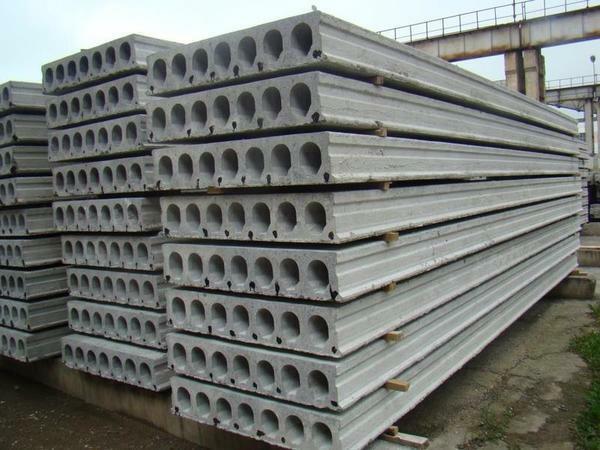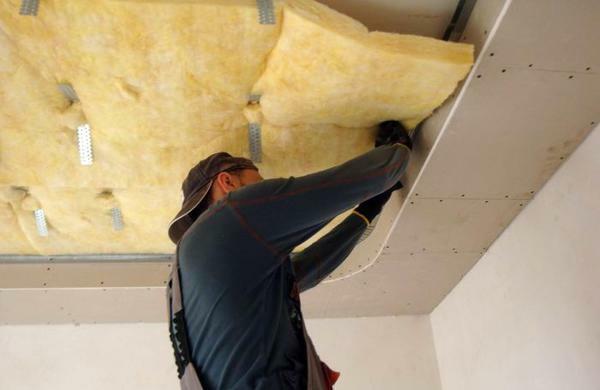
- Advantages of

- Prepared for ceiling
- Tools for work
- Selection of glue
- Options for gluing
- Diagonally
- Rhomb
- Parallel to wall
- Stages of work
- Adhesive for ceiling plinths
High concentration of humidity in the bathroom requires that waterproof materials be used for repairs. In the role of an alternative to the ceiling, you can consider the ceiling tile. It is made of expanded polystyrene, which gives it many advantages.

Advantages of
. The advantages of using ceiling tiles are as follows:
- it is simply glued, due to what you can make the finishing of the ceiling on your own without attracting specialists;
- and glue, and the tiles themselves are cheap enough. Compare the cost of consumables with the price of stretch ceilings, and you will see the difference;
- it will last a long time, while not subject to deformation and moisture;
- behind tiles is easy enough to take care of;
- fungus and mold is very simple to prevent;
- manufacturers offer a variety of colors and patterns, so the tile is suitable for any design.

If you decide to finish the ceiling with tiles, then we will consider all the steps that will help to perform the work qualitatively.
Ceiling preparation
Although styrofoam, in other words, styrofoam and is a rather unpretentious material that can be glued anywhere, this does not mean that the ceiling does not need to be prepared for finishing.
The old wallpaper or paint layer needs to be removed. If there are remnants of putty on the ceiling, then they also need to be disposed of. If something can not be removed, then it is recommended not to touch the surface, but then it is necessary to take into account the thickness of the tiles. Thin and smooth tiles once again emphasize those places that can not be processed, as they will shine through it. The best solution is to fill the ceiling with a thin layer so that it even has a uniform color.

If the tile is thick or has patterns and embossing, then the problem of unbrushed areas itself disappears. Cracks and unevenness of the ceiling is also desirable zashpatlevat. It is not necessary to achieve absolute smoothness. Well, finally, walk through the entire ceiling with a primer mix for concrete. It will help fix the top layer of putty and remove dust.

Tools for work
Tool kit for gluing foam plastic tiles:
- sharp knife for construction or office purposes;
- long ruler;
- pencil;
- gun, with which you will apply glue;
- level;
- stool, stepladder or other items that will help you to be under the ceiling;
- clean cloth piece;
- ropes.

Adhesive Selection
If the adhesive is based on a solvent - bypassing it, the foam does not withstand its action. Try to drop the usual "Moment" glue on the tile and immediately see how the material starts to melt until there is a hole.
For foamed tiles, the ideal option is "liquid nails" or, in other words, transparent glue. You can find it absolutely in any store of building materials. It is worth considering such brands as "Moment-Mounting", "Titan Wild".In principle, even PVA may come up.
All glues do not differ greatly in the speed of setting and the ability to bond. But here is the same "Moment-Mounting" sold in tubes, which are convenient to fill in a gun. And the quality is much better, but its price is higher, and the consumption is higher.

Options for gluing
You can glue the tiles on the ceiling in different ways. For example, if the sticker is carried out from the center of the bathroom, the result looks very aesthetic. But the center is not always easy to find, and at the base of the lamp it is not too easy to work. So you can start right from her. The most offensive is if one of the walls has a narrow strip of tiles that will be of different widths.
You can use the method of gluing from the corner of the bathroom. This is not always the most successful option, and it looks better in asymmetric rooms. Begin to glue usually from the opposite corner.

Consider the types of location of the ceiling tile.
Diagonally
Before gluing it is necessary to properly mark the ceiling. Take two ropes and pull them between opposite corners of the bathroom. At the intersection of the ropes will be the geometric center of the room. After marking, you can start to glue the tile.

Rhomb
For this method, there is a very well known scheme: from the center of the ceiling measure a number of squares. From each of them should go the diagonal lines. The angle of the tile should be in the center of the ceiling, and the sides should lie along the lines. This method of gluing requires an increased consumption of materials in comparison with the rest.

Parallel to the
wall This is one of the easiest ways to glue tiles. But it is appropriate in the case when you are sure that the bathroom has even walls. According to this scheme, the first row of tiles is laid along the wall, and the next ones are already glued in parallel rows.

Stages of work
Paving the tiles is not difficult. But the first thing you need to start with is to determine the number of tiles. For this you need the size of the room and the size of the tiles. Further it is quite simple to calculate how many squares of tiles it will take to glue the ceiling with it. Take the material with a margin, as it may be necessary to trim the tile or run narrow strips along the walls to fill the gap.
All the work can be broken down into a certain sequence of stages:
- First, decide on how you will glue the tile in the same way. The rest of the actions are carried out already taking into account what decision you made.
- Mark the ceiling with a pencil. Do not be too lazy to perform this stage of the work, as it will be insulting if the tile suddenly eats away when paving. It is better to spend a little more time, but to get a qualitative result. For ease of marking, stretch diagonally from one corner of the room to another rope. By crossing two ropes you will find the center of the bathroom. And from it it's easier to make markup.
- Marked the ceiling? Great, go to the stage of gluing. Carefully apply glue all around the perimeter of the tile and diagonally crosswise. To apply glue, you can use a gun, or you can squeeze it out of a tube in the old fashion.
- Press the tile to the ceiling and secure it in place for a few seconds. The first tile should take the exact place. Its angle and sides must be arranged in accordance with the markings. This moment is very important, since the first tile depends on the subsequent labeling. If it is unevenly distributed, then the rest you can not already align. While the glue did not have time to grab, the tile can still be moved a little if necessary.
- Alternately glue the rest of the tiles according to the markings. Try to place them closer to each other so that there are no visible seams or cracks.
- If the seams are quite noticeable, then after the end of the gluing, they can be puttyped. Or there is a more successful way out - a silicone sealant that fills the gaps. Due to it, the coating will appear seamless.



Ceiling skirting boards
Ceiling baseboards are not only beautiful. They impart a complete finish to the bathroom, and also have a purely practical value: with their help you can hide unevenness when gluing tiles or failed joints with the wall. If the tile has been truncated somewhere, then the uneven edge can also be covered with ceiling skirting boards.
To glue them is not difficult. Before starting work, you need to calculate the required amount of materials. Stages do not take much time:
- Skirting needs to be cut exactly, so attach one bar to the corner of one wall and about 10 cm from the corner, draw a line with a pencil on the bar. At the adjacent wall I do all the same with the other bar. Then they in turn are applied to a corner between adjacent walls and mark with a pencil the places of abutment. After the plinth cut at an angle of 45 degrees on the marks made.
- The plinths, like tiles, are glued to "liquid nails".
- Plinth is applied to the corner at the junction of the wall and ceiling and pressed for a few seconds. If there are excess glues, they should be removed immediately with a clean cloth.
- Observe the integrity of the picture if it is on the skirting boards. In the presence of obstacles in the place of installation skirting, cut in it, corresponding to the size of the obstacle shape.
If the walls in the bathroom are not very smooth, then if you strongly press the plinth to the corner - it deforms. It is better to leave the gap, and then seal it with putty.





